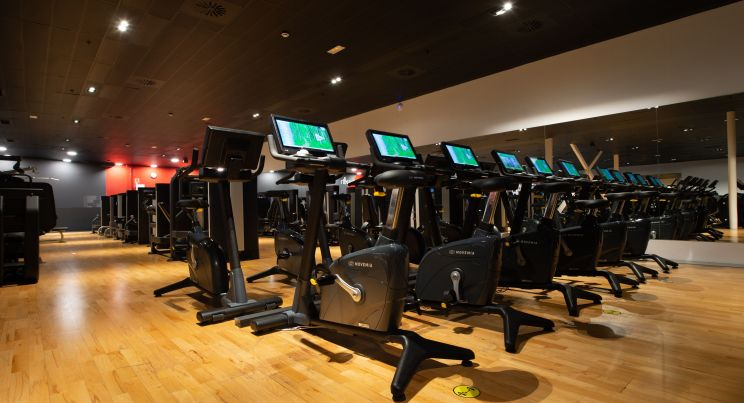Managers in the fitness industry recognize that renting machines is their favorite financing formula, as it reduces the initial investment stress of opening a club. This amount ranges from 120,000 euros to more than 9 million.

Wellness has established itself as a trend and a sector in which to invest, and fitness is part of that ecosystem. Investment funds are buying gym chains, investors are opening franchised clubs, trainers are raising the shutters of their own business as self-employment… The fifteen main gym chains have invested 997 million euros in building and equipping sports centers, according to data from 2Playbook Intelligence, 2Playbook’s market intelligence unit. Some are large facilities, others are small personal training studios with a turnover capacity limited to their ability to receive fewer customers. But how much does it cost to open a gym in Spain?
Depending on the business model, the investment ranges from the 120,000 euros it costs to start up a Brooklyn Fitboxing to the more than 9 million euros invested by chains such as GO fit, Supera or Metropolitan; some projects have even reached 20 million euros. In the case of franchises, the initial outlay is between 80,000 euros and 400,000 euros, of which between 20% and 40% is dedicated to fitness equipment. For premium and concession clubs, spending on equipment is reduced to between 10% and 30% of the total budget.
Professionals in the sector recognize that everything other than buying the equipment helps, because there is no need to amortize it and the disbursement is recorded in the expense account, thus facilitating business management. In other words, renting “reduces initial stress and fixed costs, improves control of the business’ income statement and avoids technical obsolescence,” adds Javier Areizaga, commercial director of the professional segment of BH Fitness. “Anything that avoids a suffocating initial outlay for the customer is usually welcome,” he stresses. The company finances with its own resources, without financial intermediaries, something that facility managers also like.
“When seeking financing, banks ask you to have equity of 40% of the amount you request; that gives them peace of mind, but it implies having capital before you start,” explains Rubén Ruíz, of Xfitness. This chain is in the expansion phase and has signed an agreement with BH Fitness so that the acquisition of equipment is not a problem for investors and entrepreneurs.
“They provide financing facilities and are very flexible because they allow changes to be made to orders on the fly,” explains the manager. The financing formula most commonly used in these cases is leasing, which is the option that business owners like the most, because the supplier assumes the maintenance of the machine during the 5 years of the agreement. At the end of the period, the operator can decide whether to purchase the machine, paying its residual value, or renew the equipment.
“With the current technological development, equipment renewal is going to be much earlier; perhaps the renewal period has been reduced by two years in order to keep up with trends,” explains Marcos Baroja, CEO of Infinit Fitness, a 24-hour fitness center franchise. Hence the need for flexibility.
So, if for example during the pandemic the use of cardio equipment drops, the operator can ask his equipment supplier to remove part of those machines to make more room for new market demands, such as functional training or bodybuilding. These are the advantages of renting machines, rather than buying, which is a formula that is hardly used in the fitness industry.
Renting reduces initial stress and fixed costs, improves control of the business’ bottom line and avoids obsolescence
“We are looking for an ally from a business and financial point of view; it’s not about buying machines by borrowing money from the bank, but about them making our life easier by renting the machines,” he says. What Baroja values about BH Fitness is that by modifying the type of equipment contracted, it includes it in the same leasing package already signed without the need to explore new financing. “In times of uncertainty, having a provider that facilitates this financing helps a lot,” he explains.
Even more so at a time when the rise in inflation has meant that, if a few years ago the investment to open a club was 600 euros per square meter, now it is 800 euros per square meter, which means that a 500 square meter club has gone from needing an investment of approximately 300,000 euros to 400,000 euros.
Long-term alliances
Signing agreements with suppliers that go beyond the provision of equipment in exchange for rent is also one of the trends. For example, the manufacturer from Vitoria has become a partner of Baskonia-Alavés until 2025, an agreement by which it has renewed the machines in the sports city of the ACB team, where the citizens of Vitoria also train. Thus, the center has become a showroom of the fitness brand.
“I am in favor of establishing a business engineering agreement in which we win on both sides; these types of alliances give security to the client because they are long-term,” explains Borja Junco, manager of Bakh, a facility in which the group invested 39 million euros just for its start-up.
However, this type of partnership agreements are not available to everyone, as they are easier to sign for large, emblematic facilities than for smaller clubs. “A large facility can give showroom space to suppliers, and that makes it possible to seal alliances between brands that see us as an interesting facility,” says Junco. This, and the fact of contracting hundreds of training machines, helps to obtain more advantageous financing conditions.

